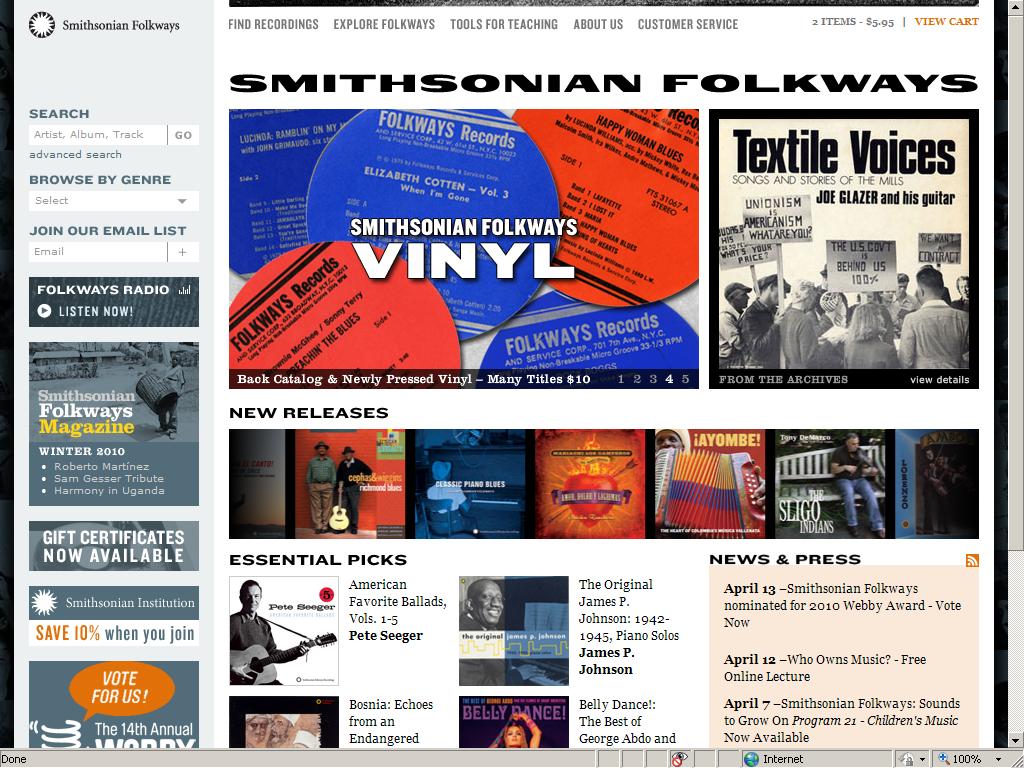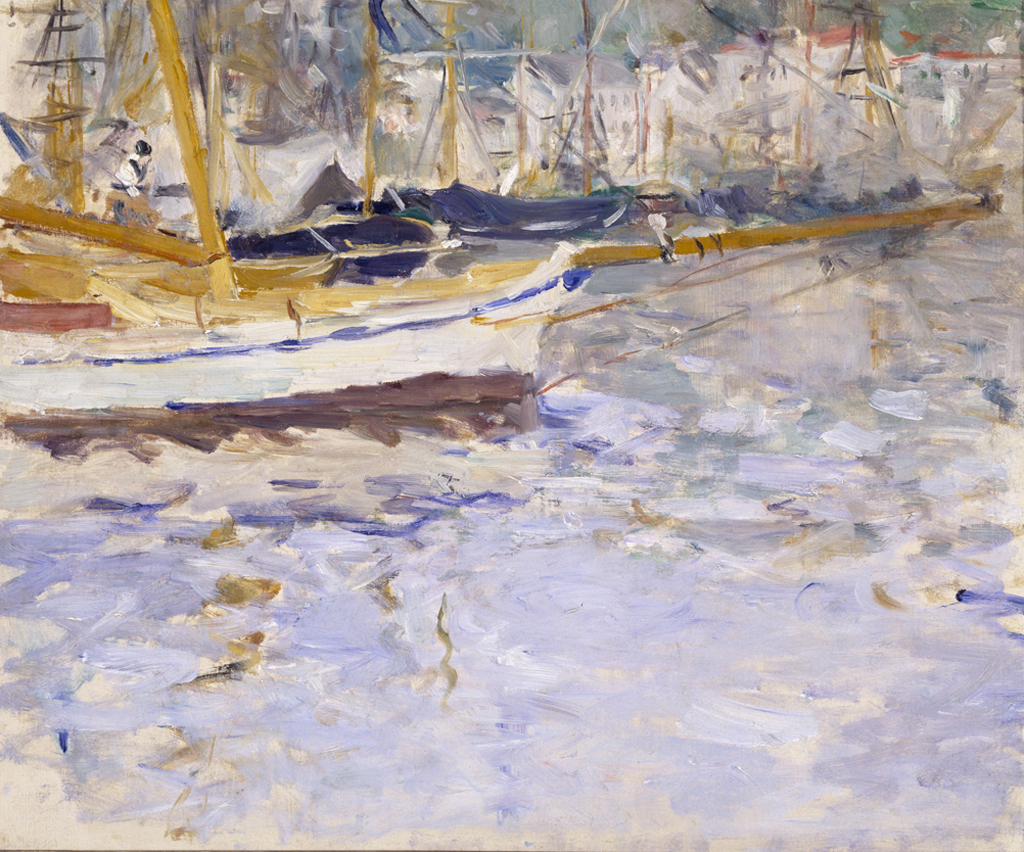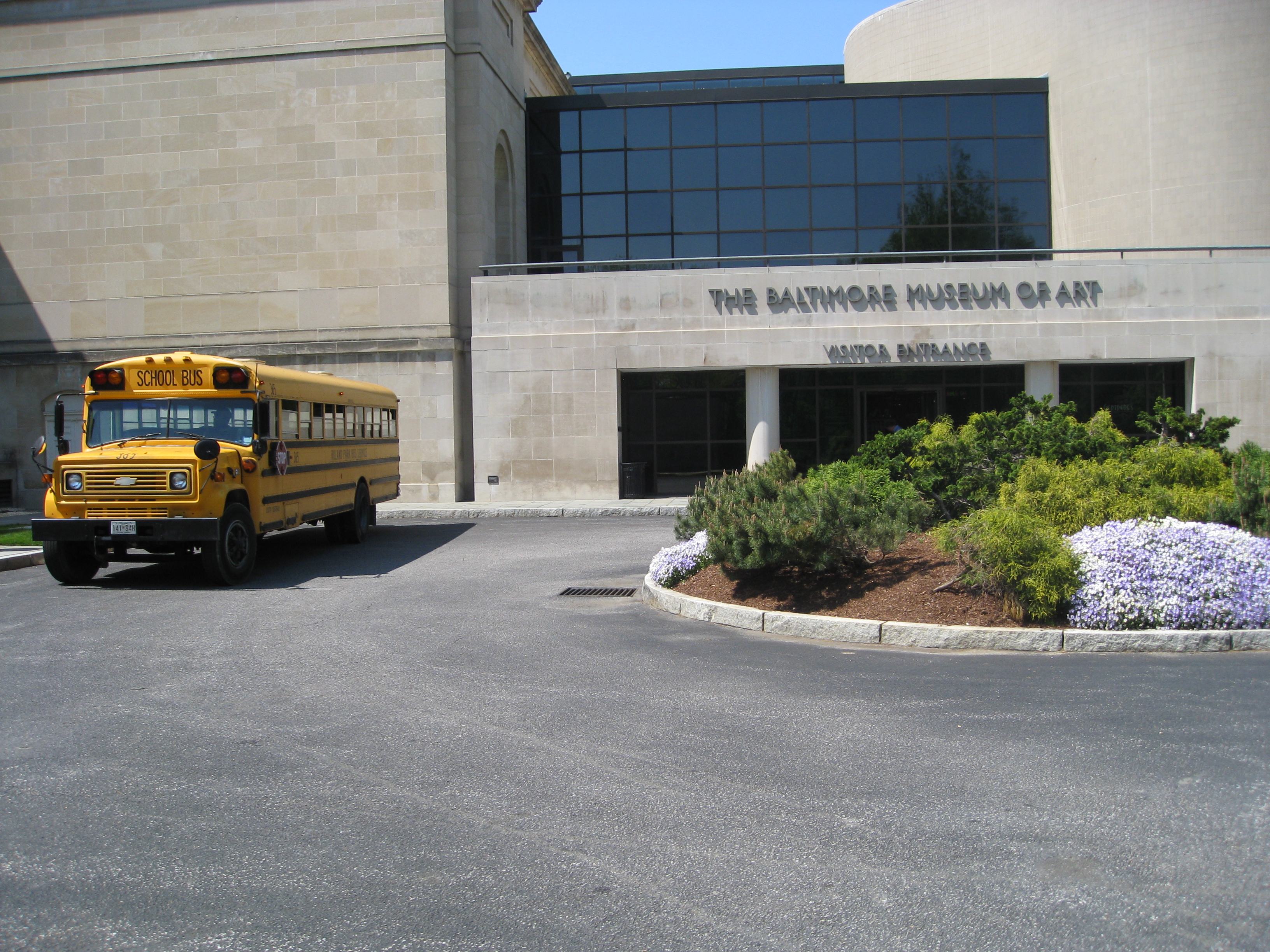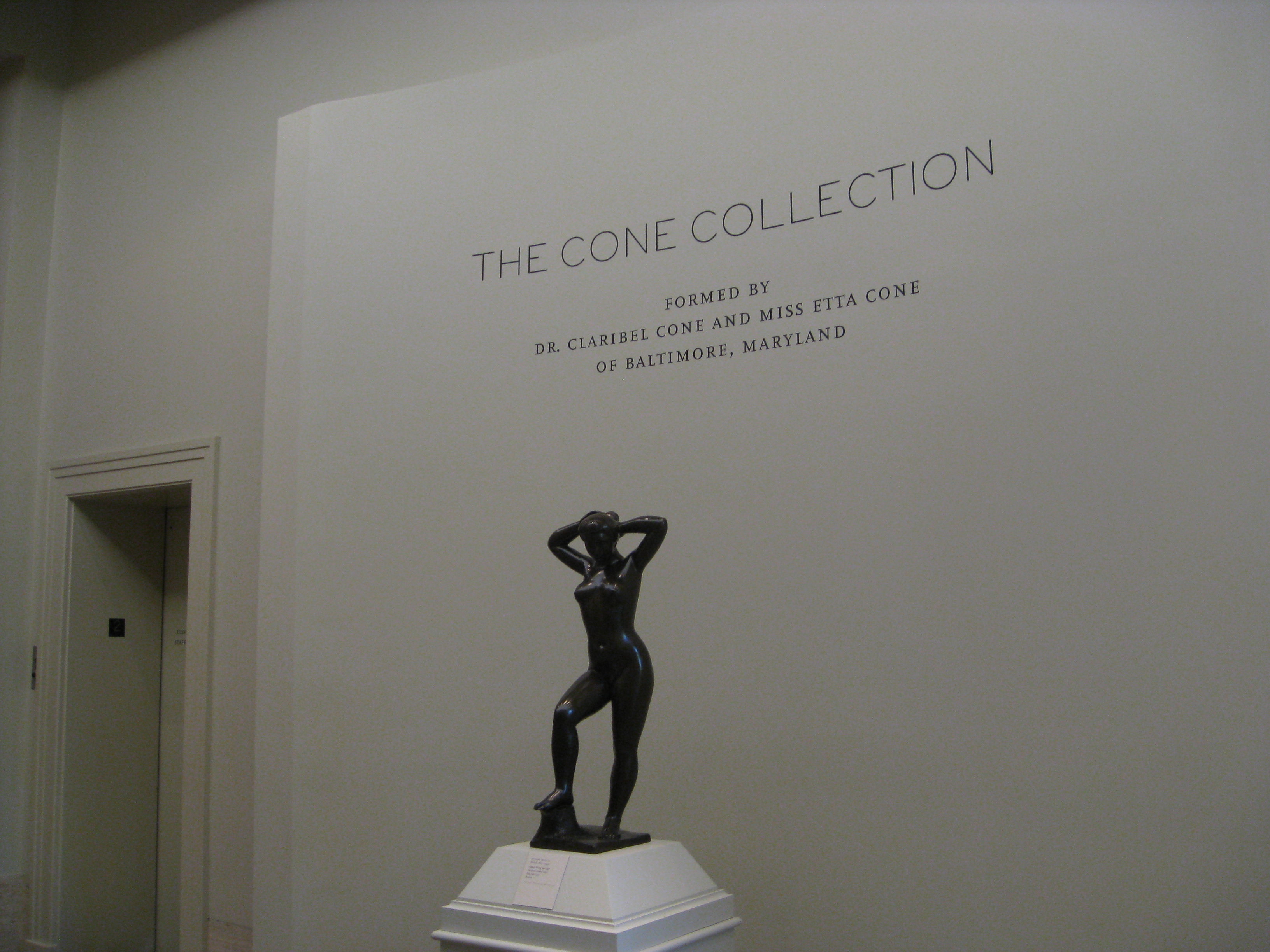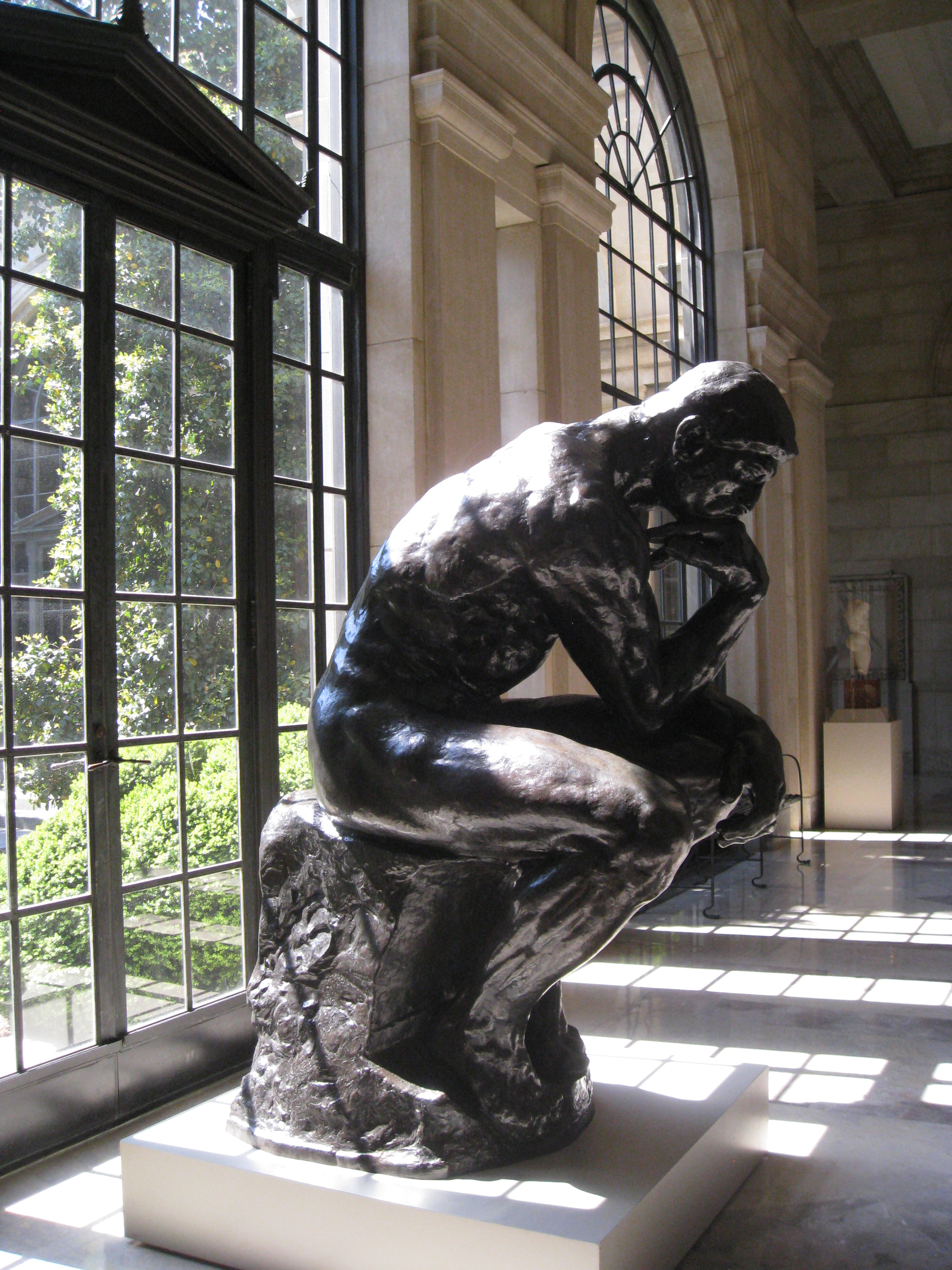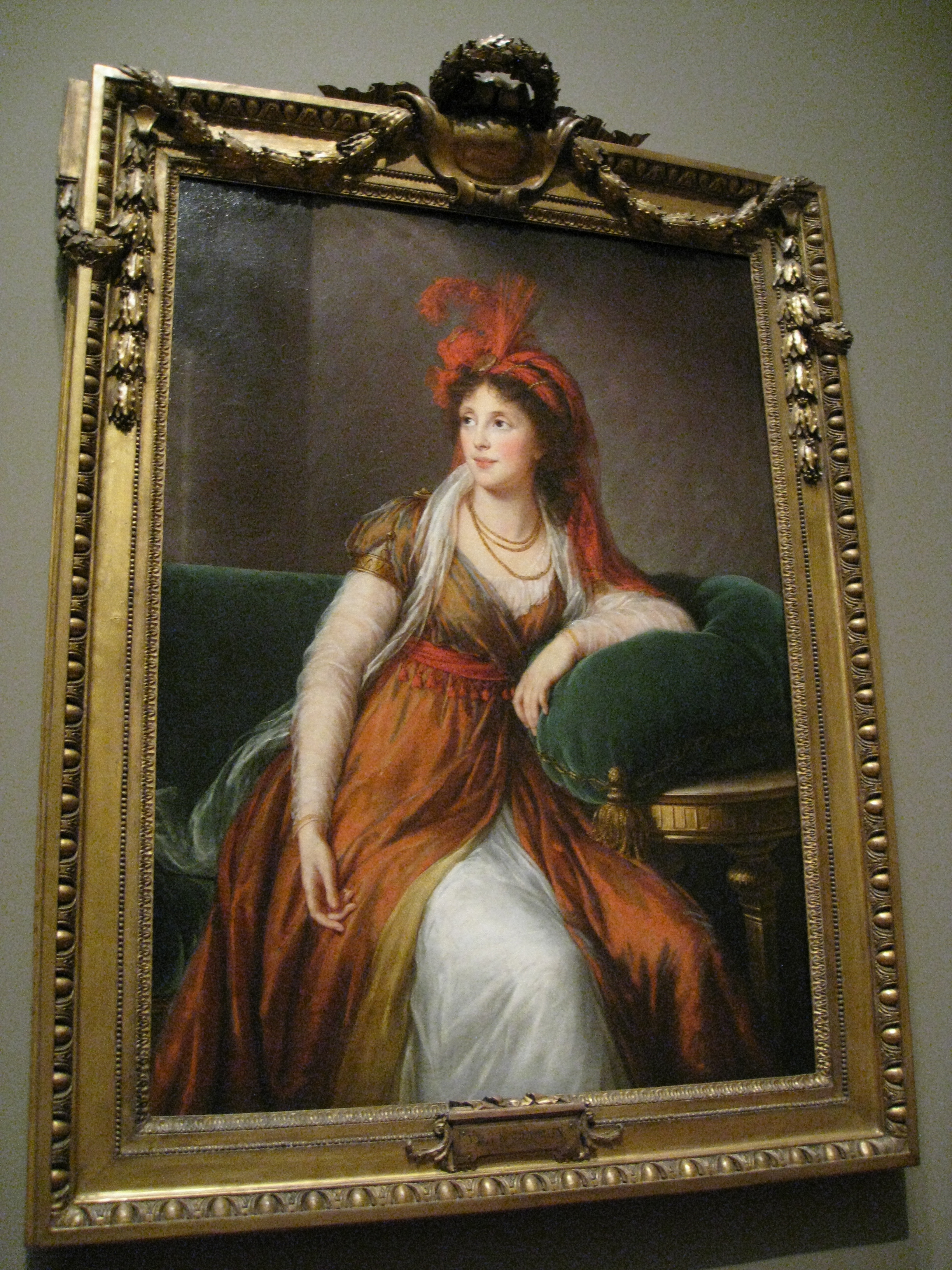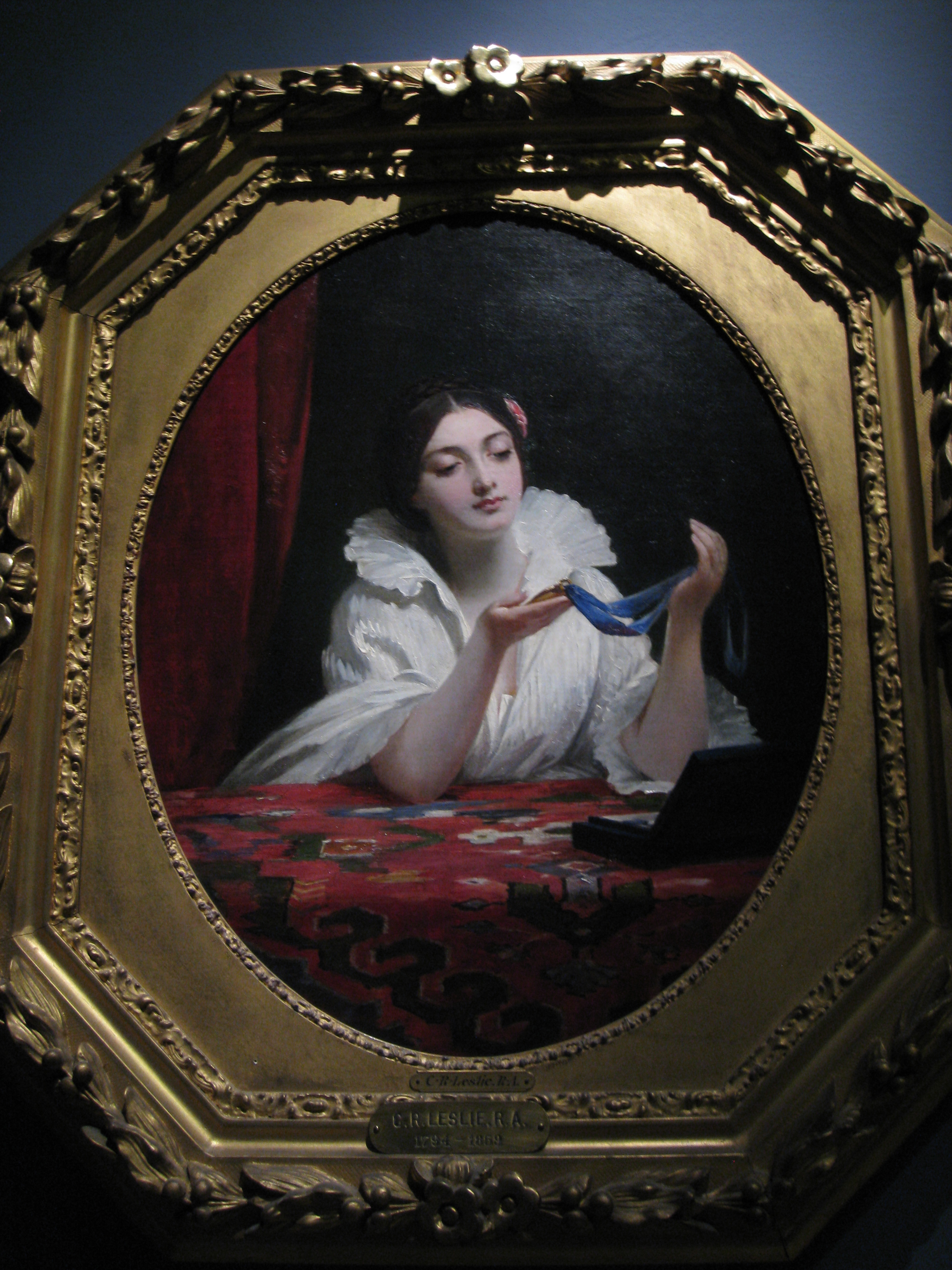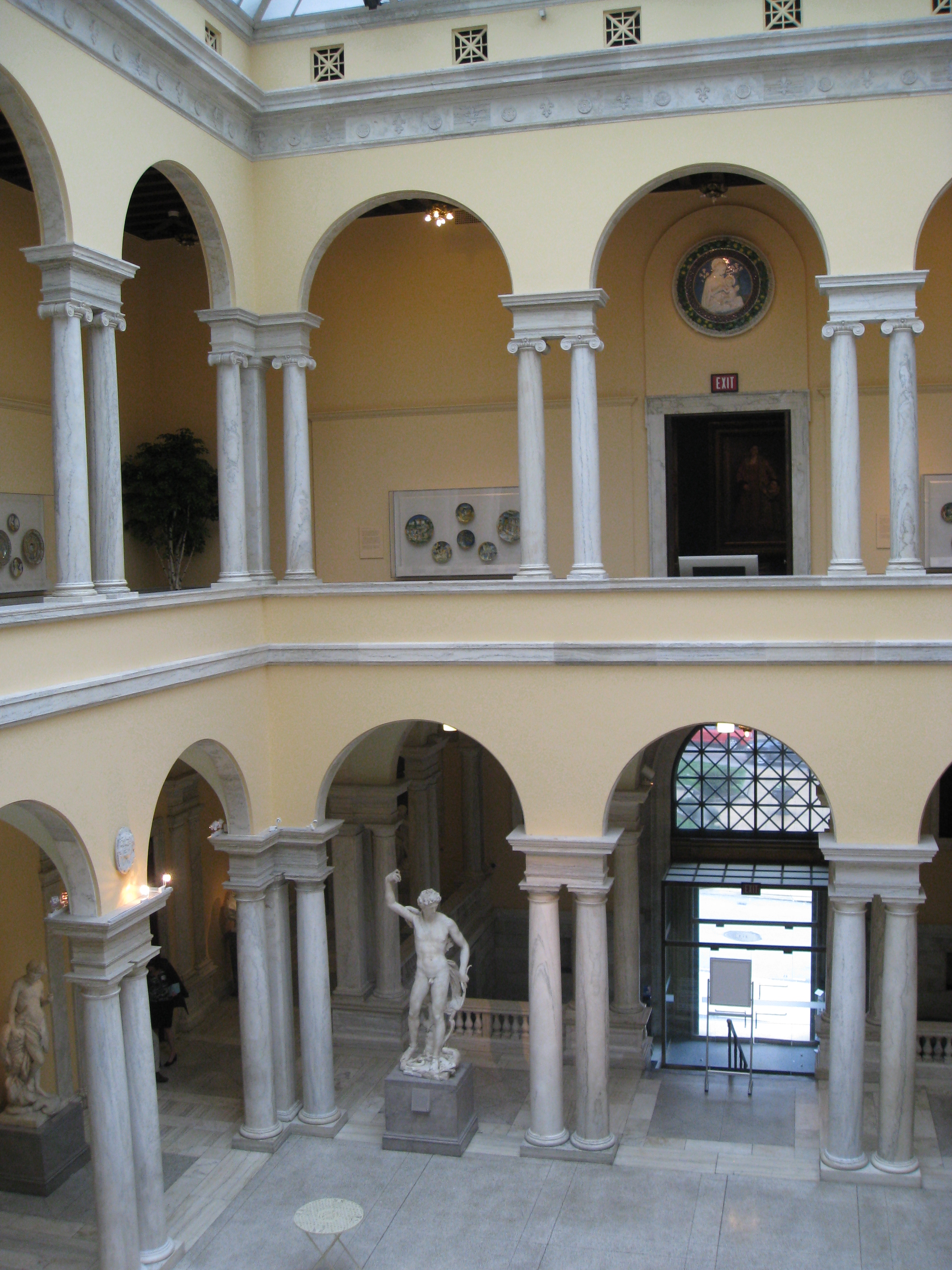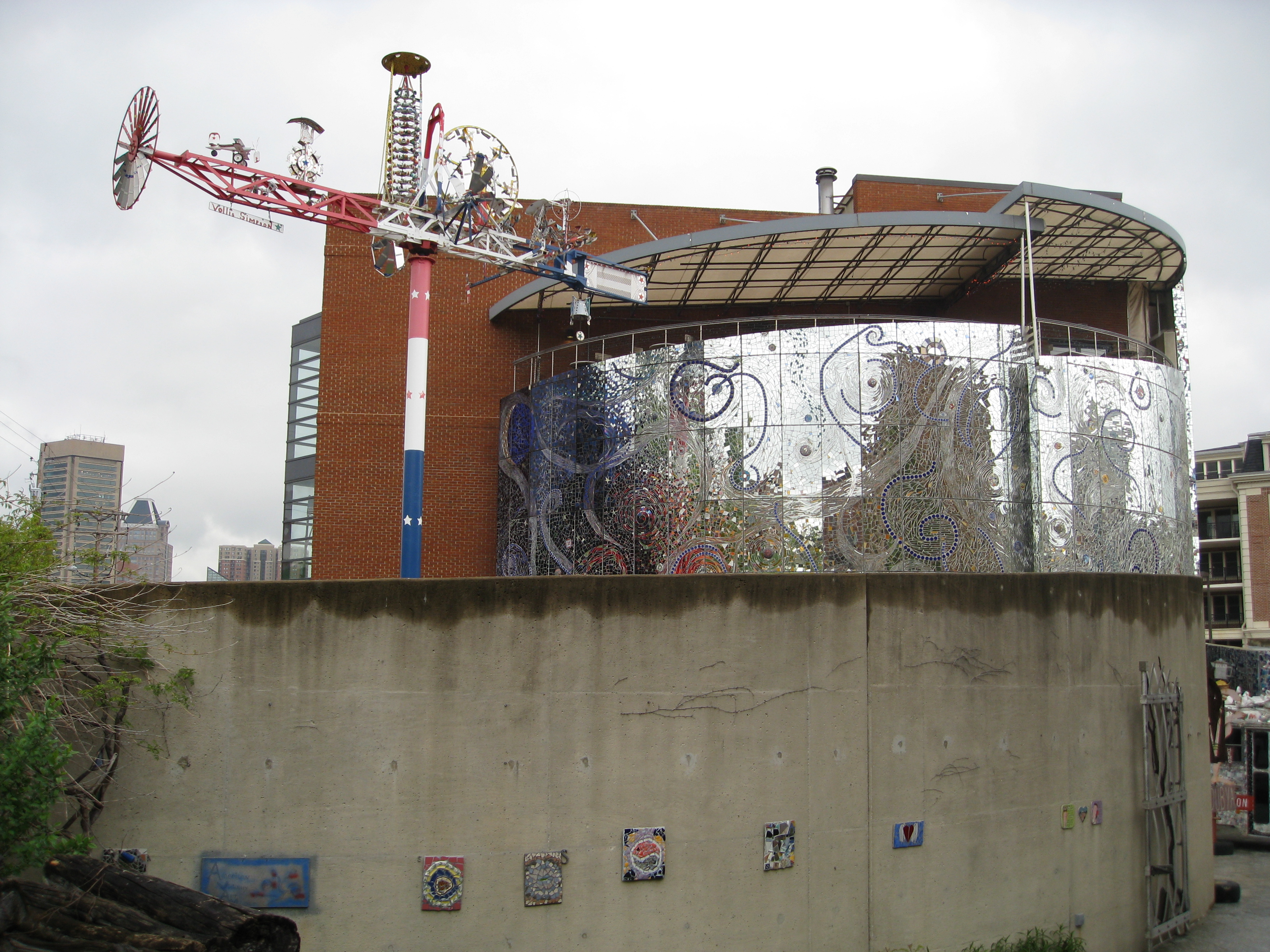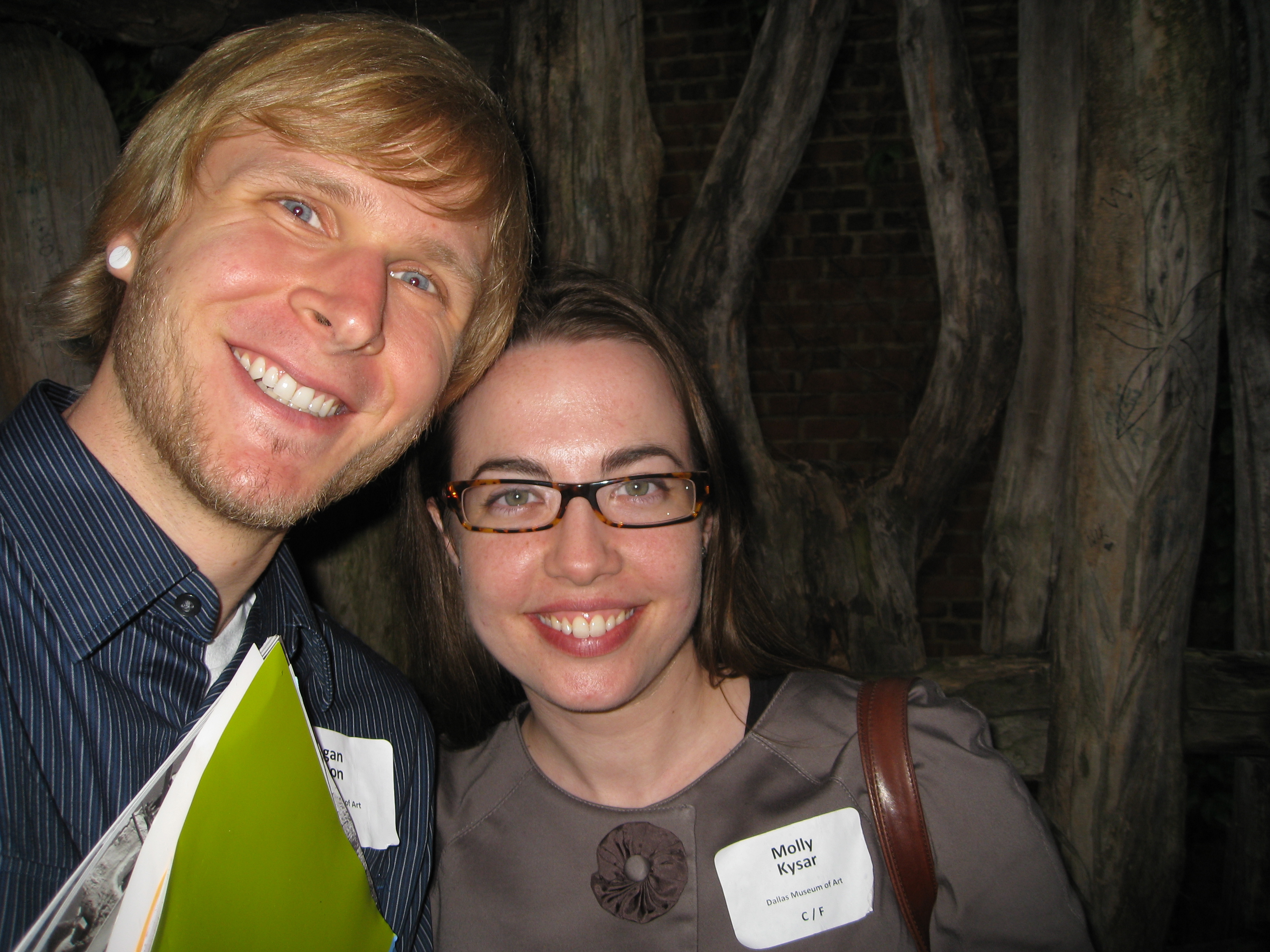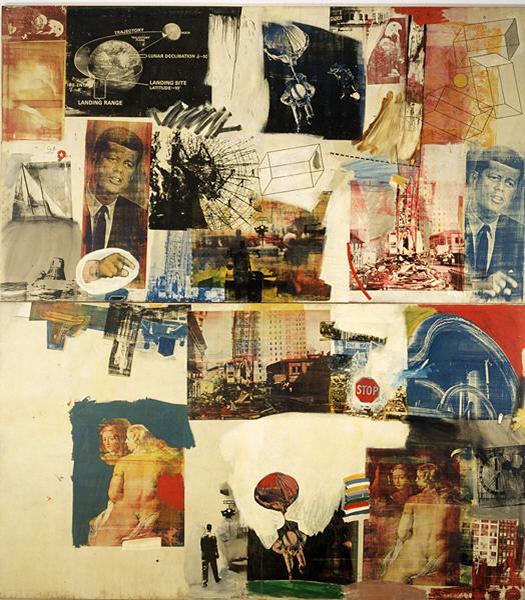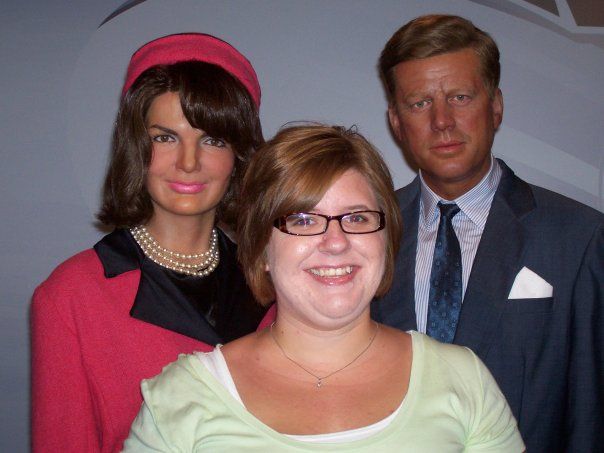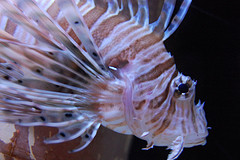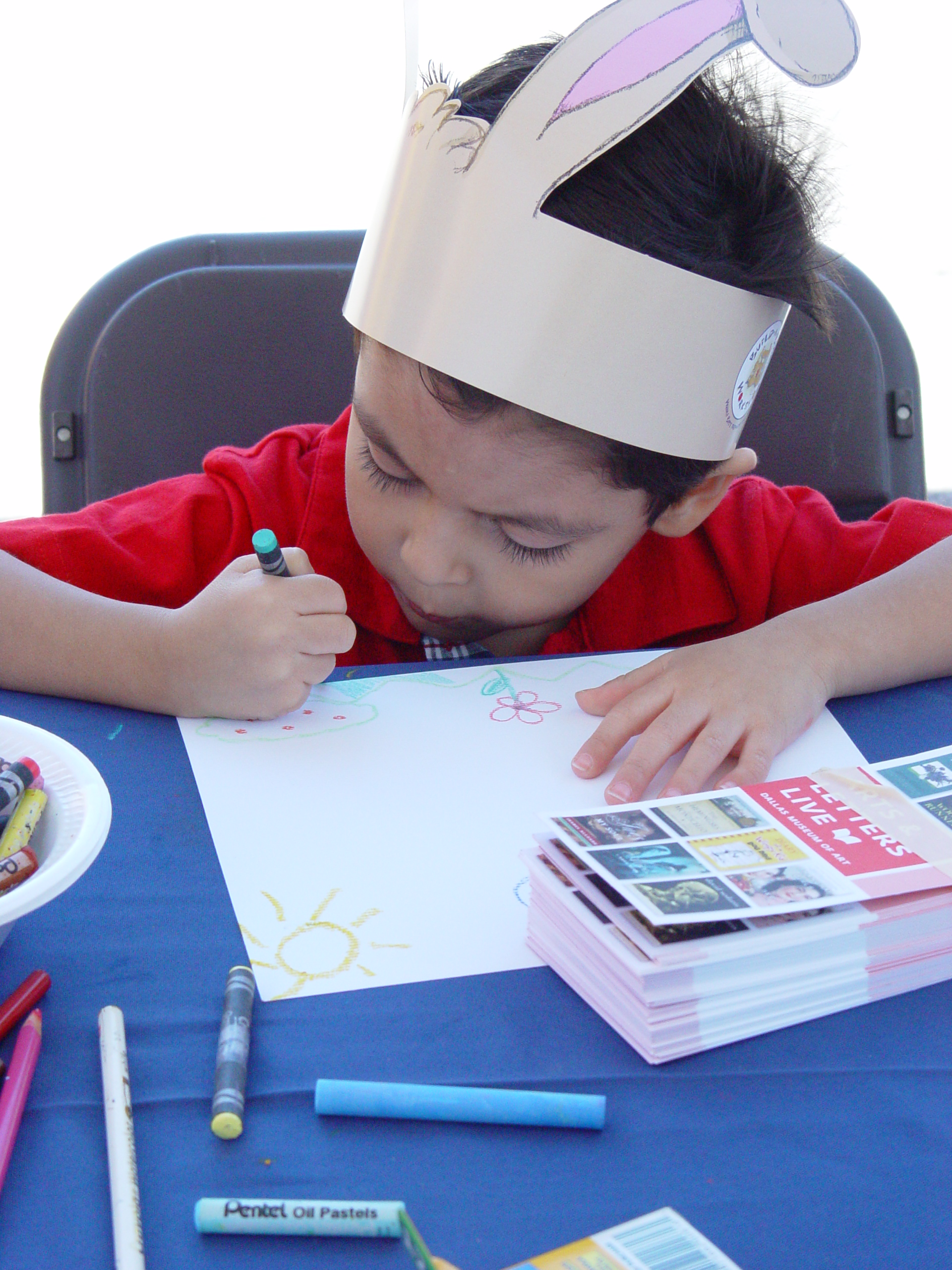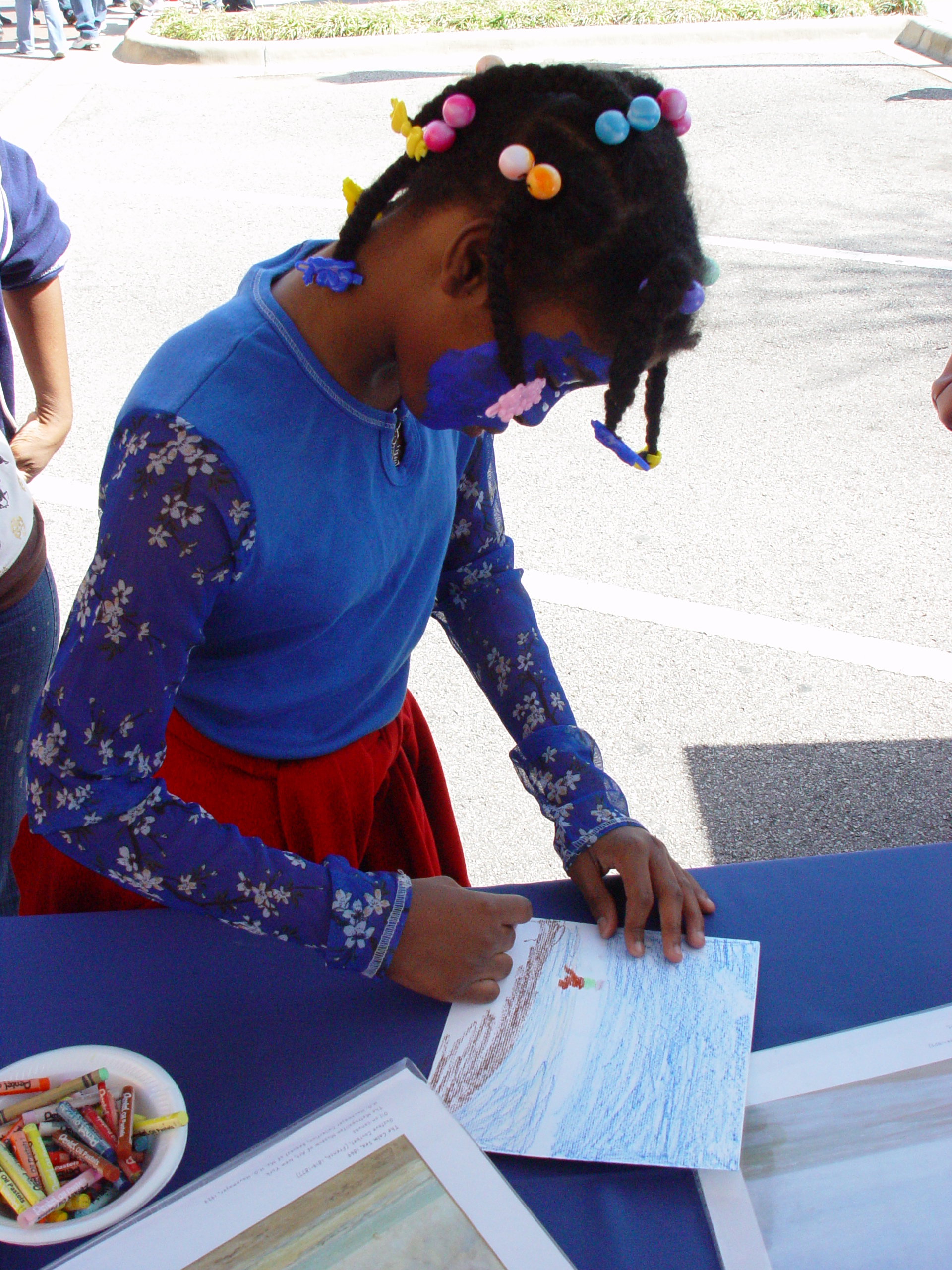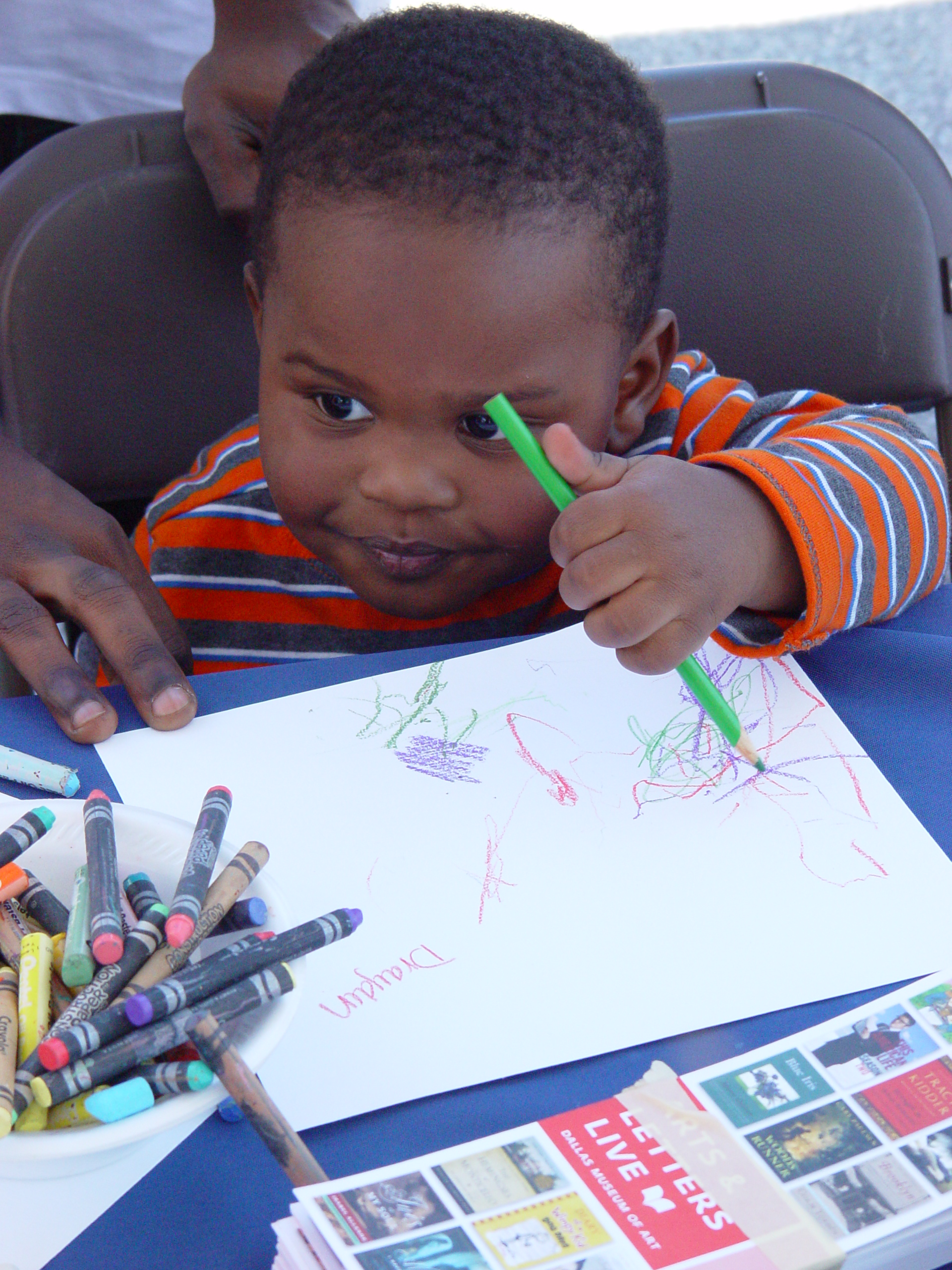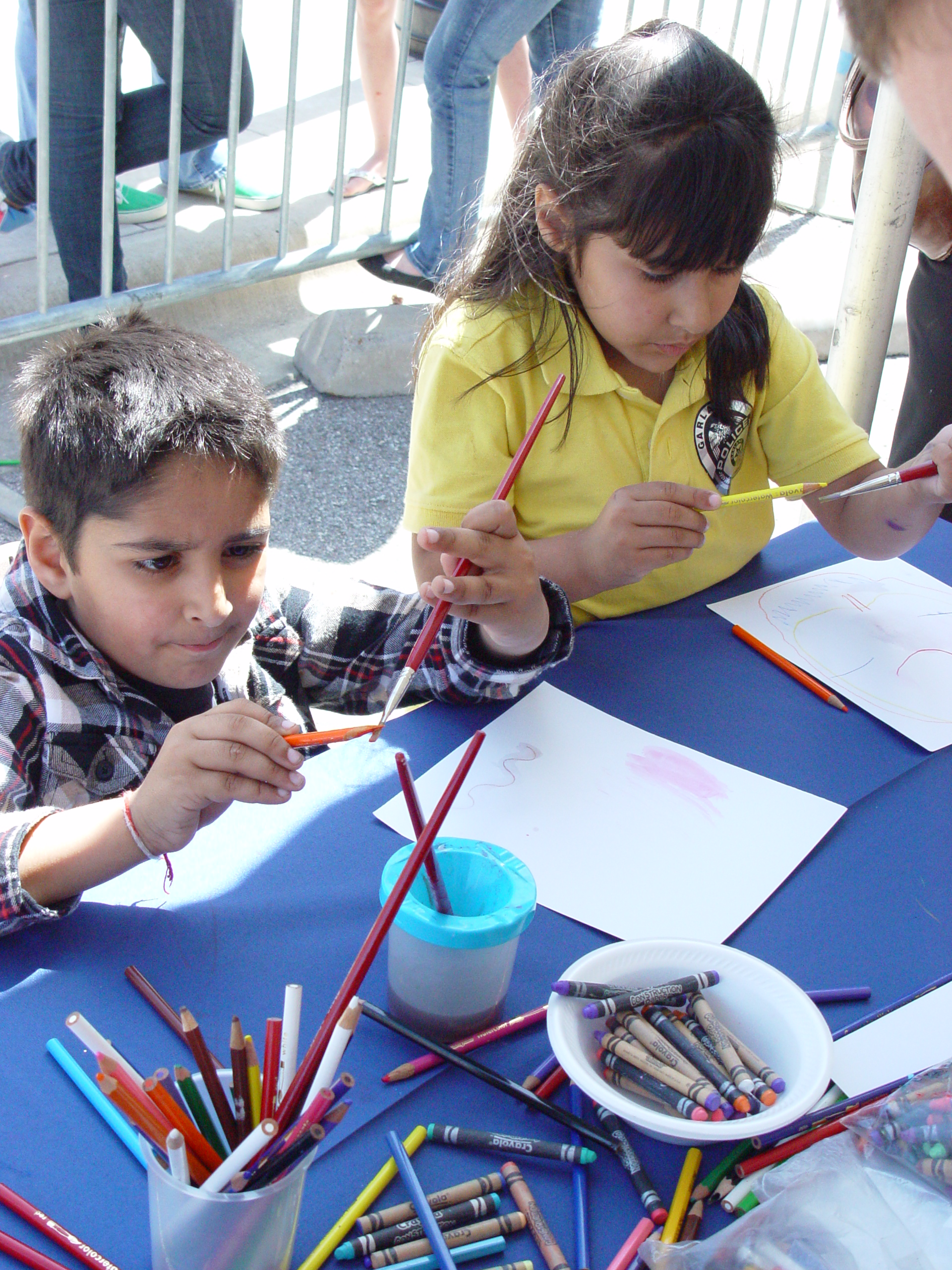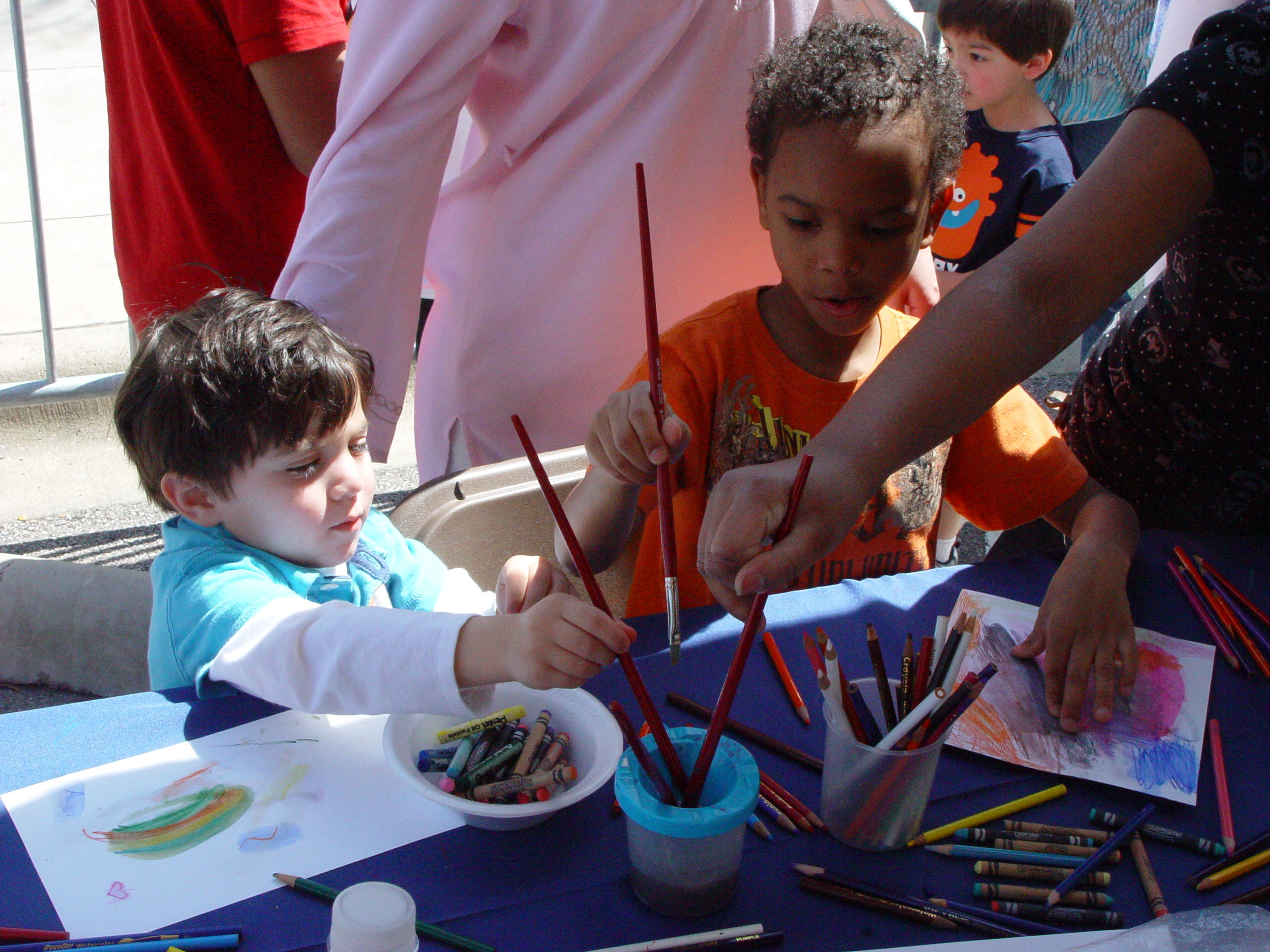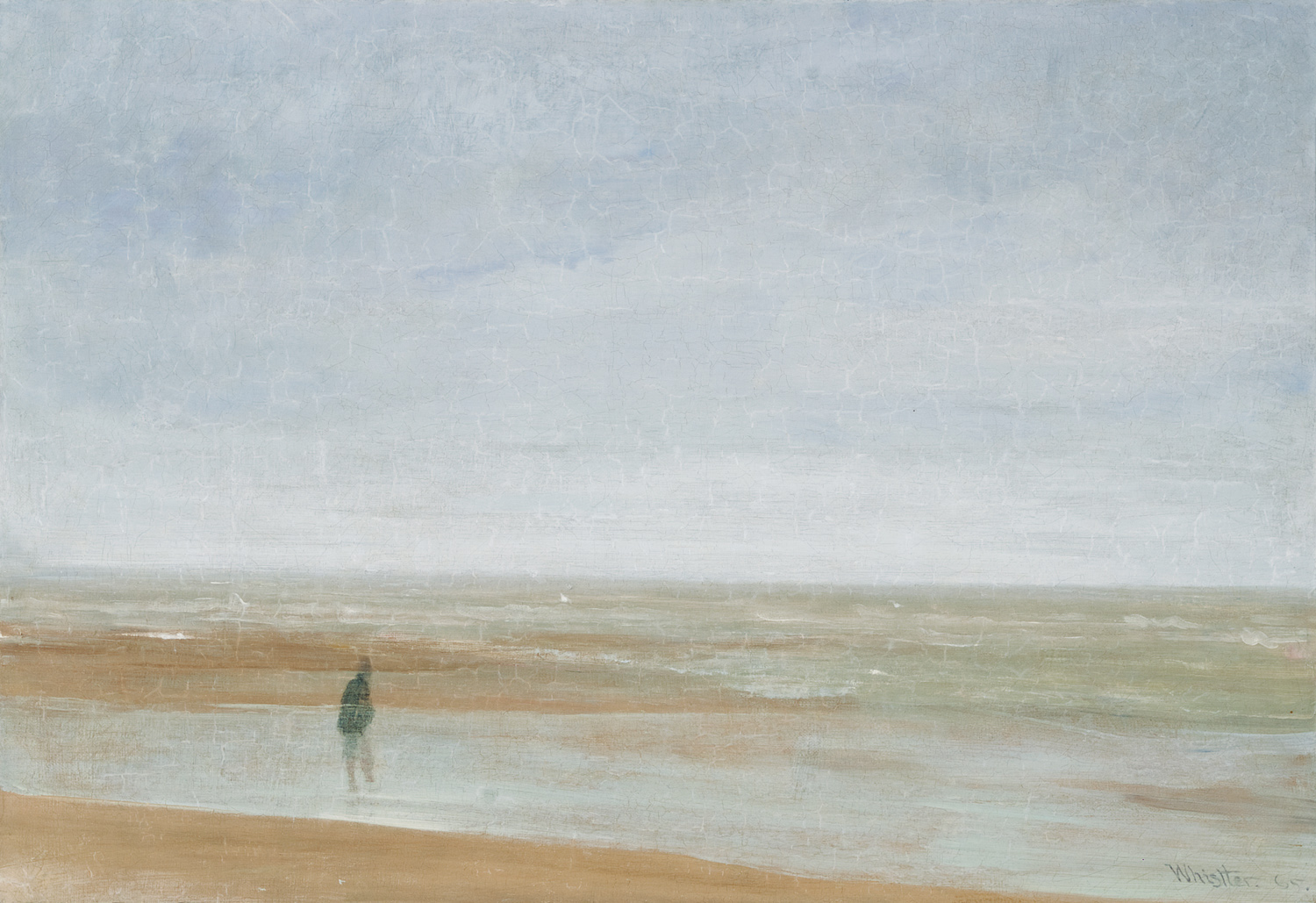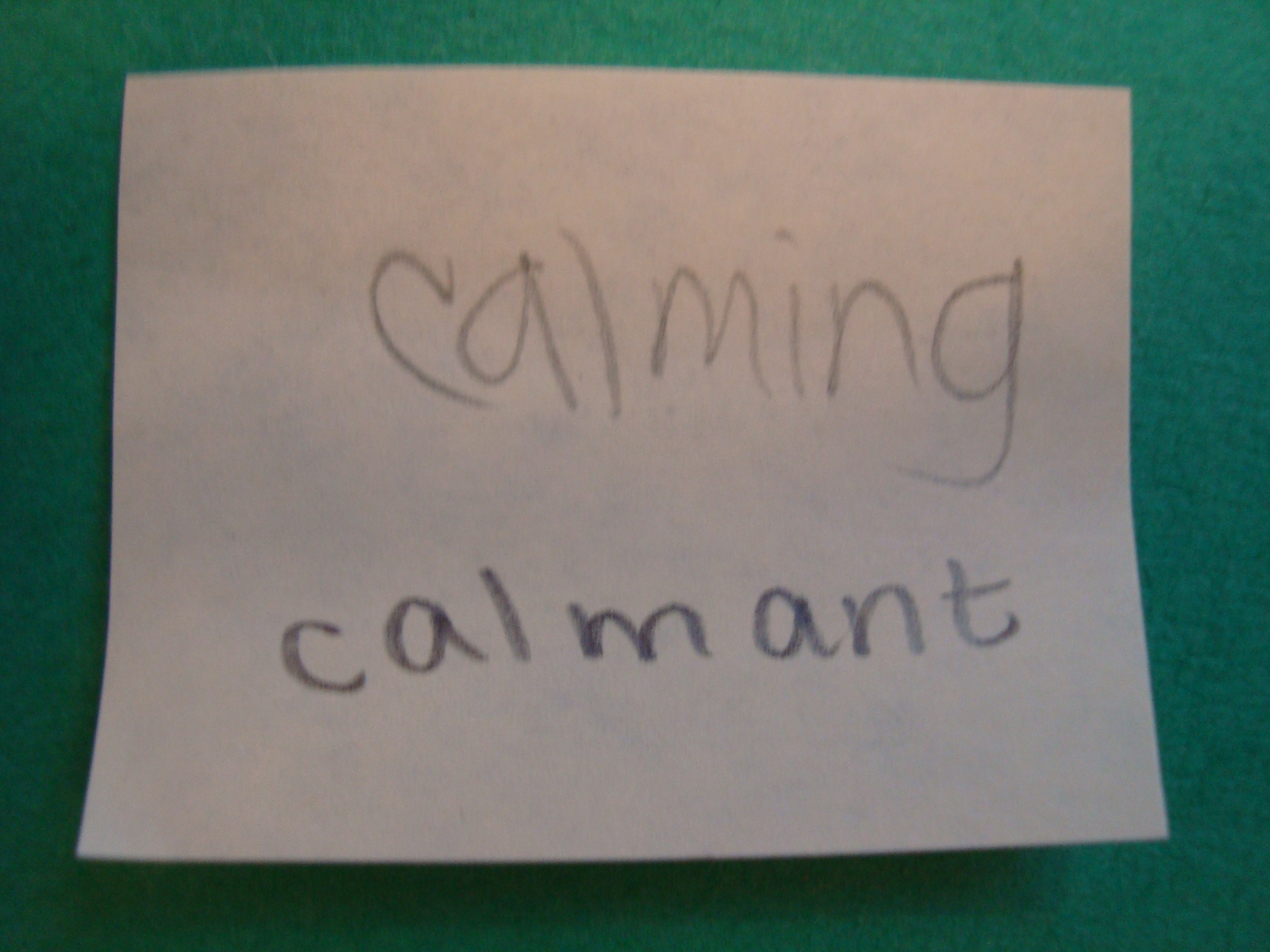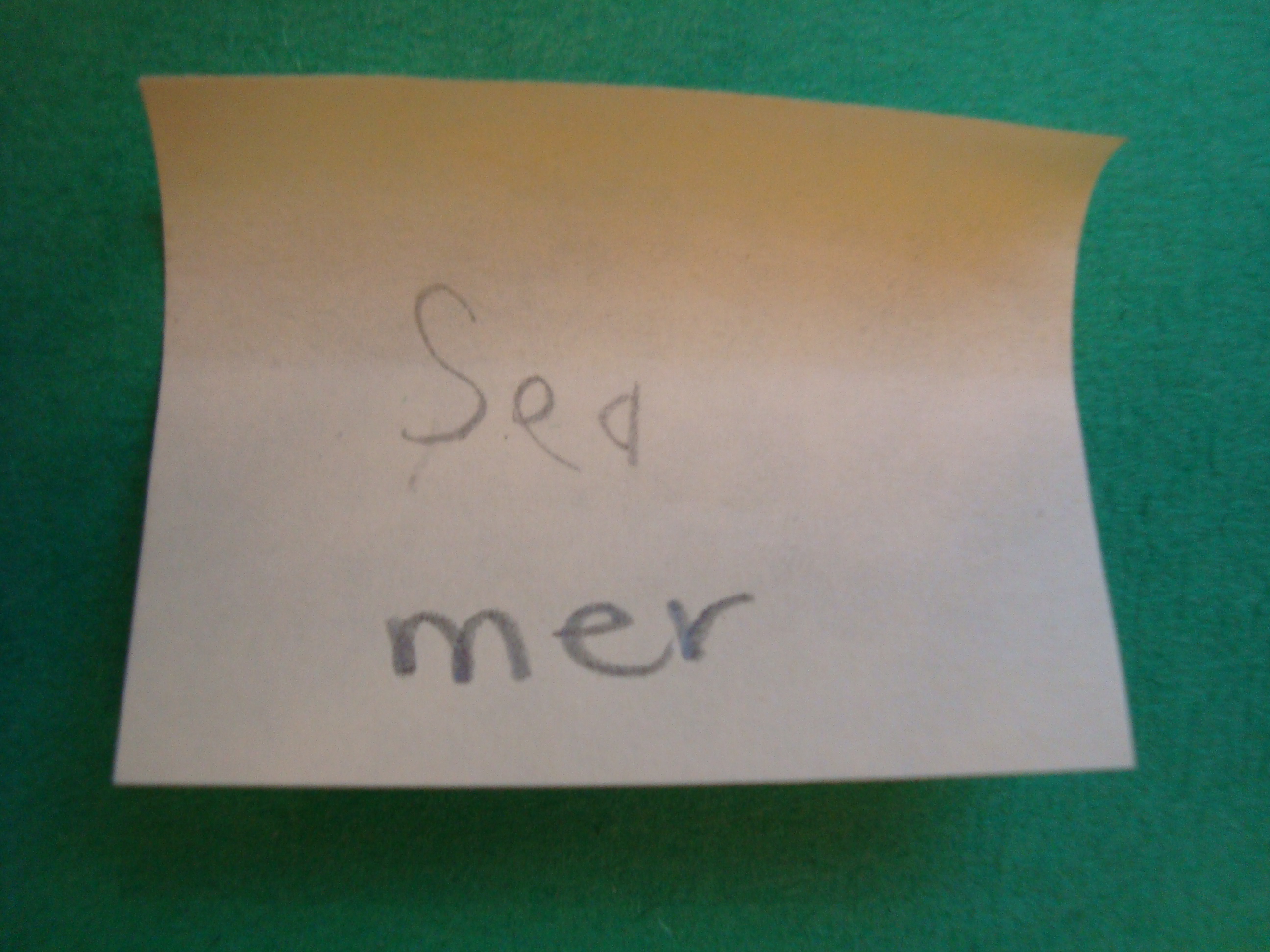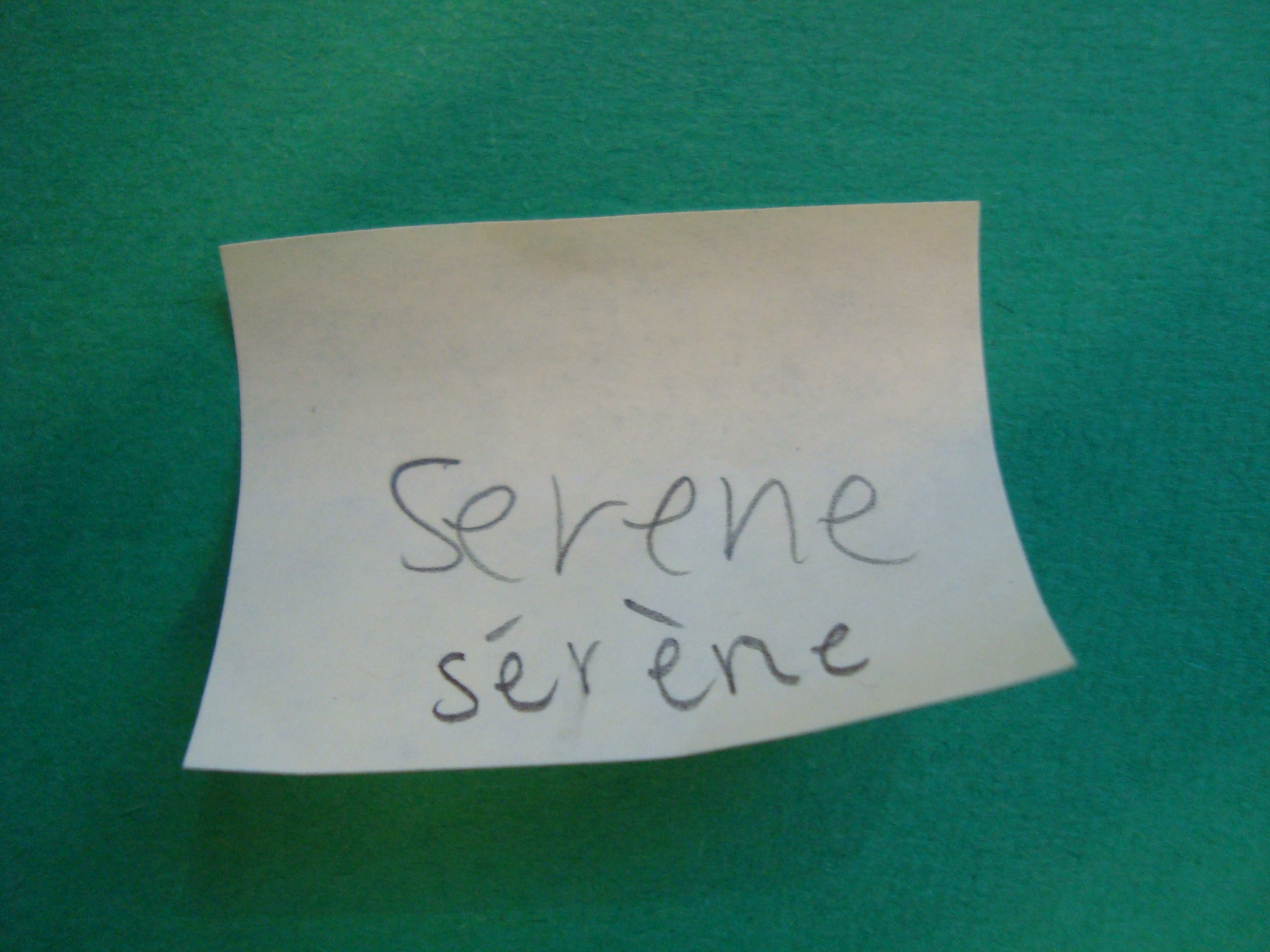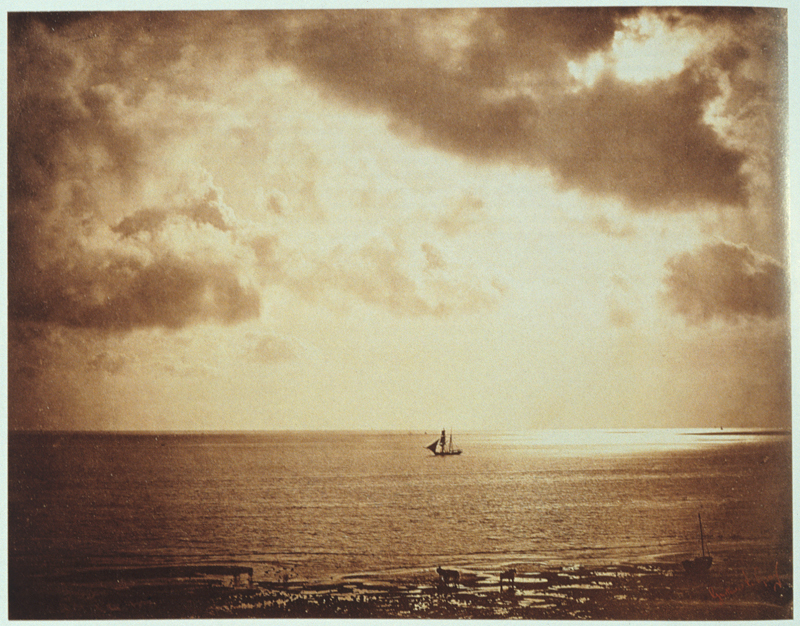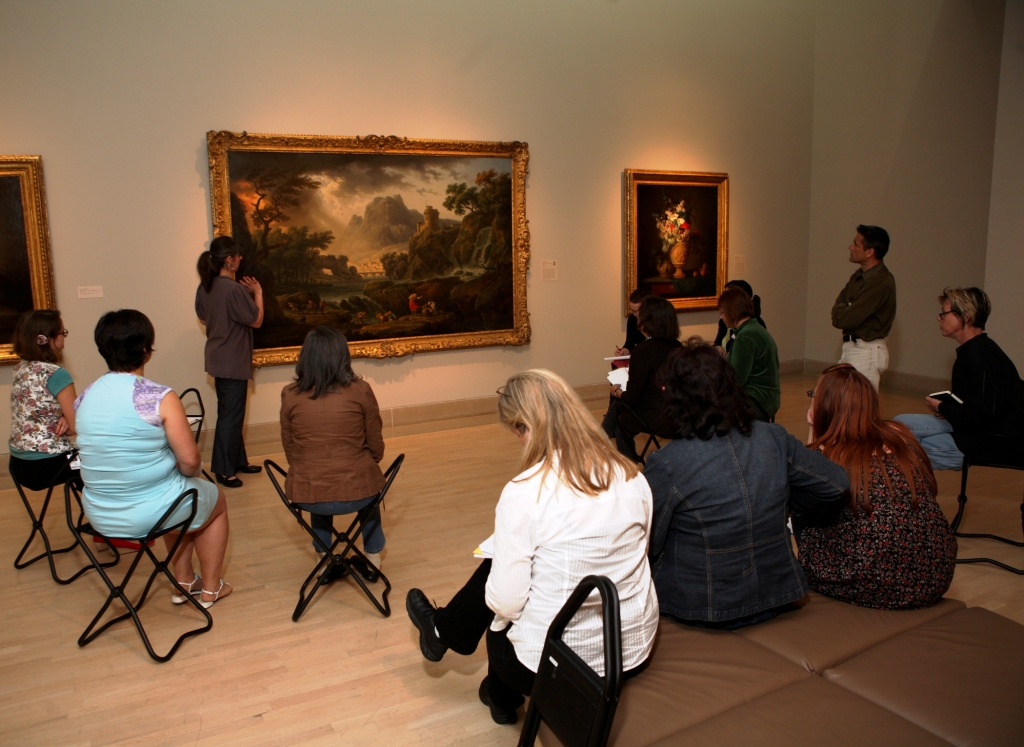Dave Herman has partnered with the DMA’s Education divison in a variety of ways. As President and Creative Director of Preservation LINK, Inc., Dave initiated a partnership with the DMA that resulted in an annual exhibition of photographs by participants in Preservation LINK’s Point of View program. He was invited to serve on an advisory board for the development of a new type of Go van Gogh outreach program, based on his perspective as a professional photographer and his teaching experiences with students. Dave also led several workshops as the February Visiting Artist in the Center for Creative Connections as well as a Summer Art Camp during 2009. In summary, we enjoy partnering with Dave and take every opportunity to work with him.
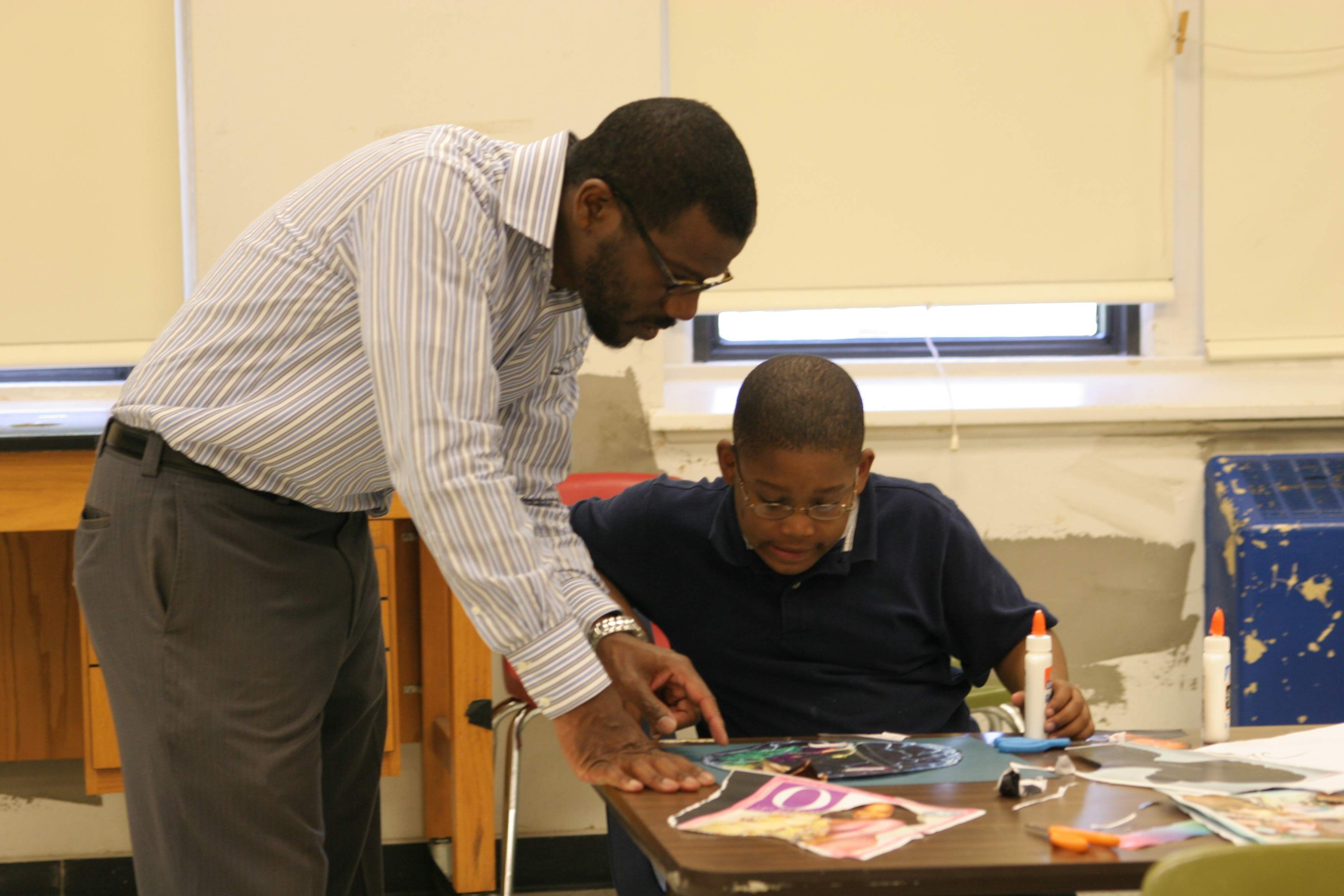
Dave Herman coaches a student through an art project.
You describe yourself as a visual sociologist. Can you tell us what that means to you?
Visual sociology is, in a lot of ways, documentary in nature. It is almost as if you put out a hypothesis or investigative question, and then you document what you find out and share some of those answers visually. It lends itself to a different kind of attention, because you’re trying to put pieces of puzzles together and understand what that all looks like. Visual sociology is also about how people interact with each other and how they respond to things.
Was there a defining experience or person in your life that led you to where you are today?
I first associate my mom and dad with helping to shape me and my values. A lot of what I do is based on my background and what I believe in. My work with students through Preservation LINK comes from a passion to help kids understand themselves, understand their potential, and to be confident that they can reach their goals. One thing that motivates me now, even as an artist, is that I didn’t necessarily have that growing up. This is something really important – for students to have guidance and the opportunity to grow, to have ownership, and to eventually have a sense of “I’ve got this now”.
Over the six years that I’ve known you, I’ve witnessed exciting growth with Preservation LINK. Do you have any advice for others who are interested in starting a non-profit organization with the goal of educating youth through literacy, art, and technology?
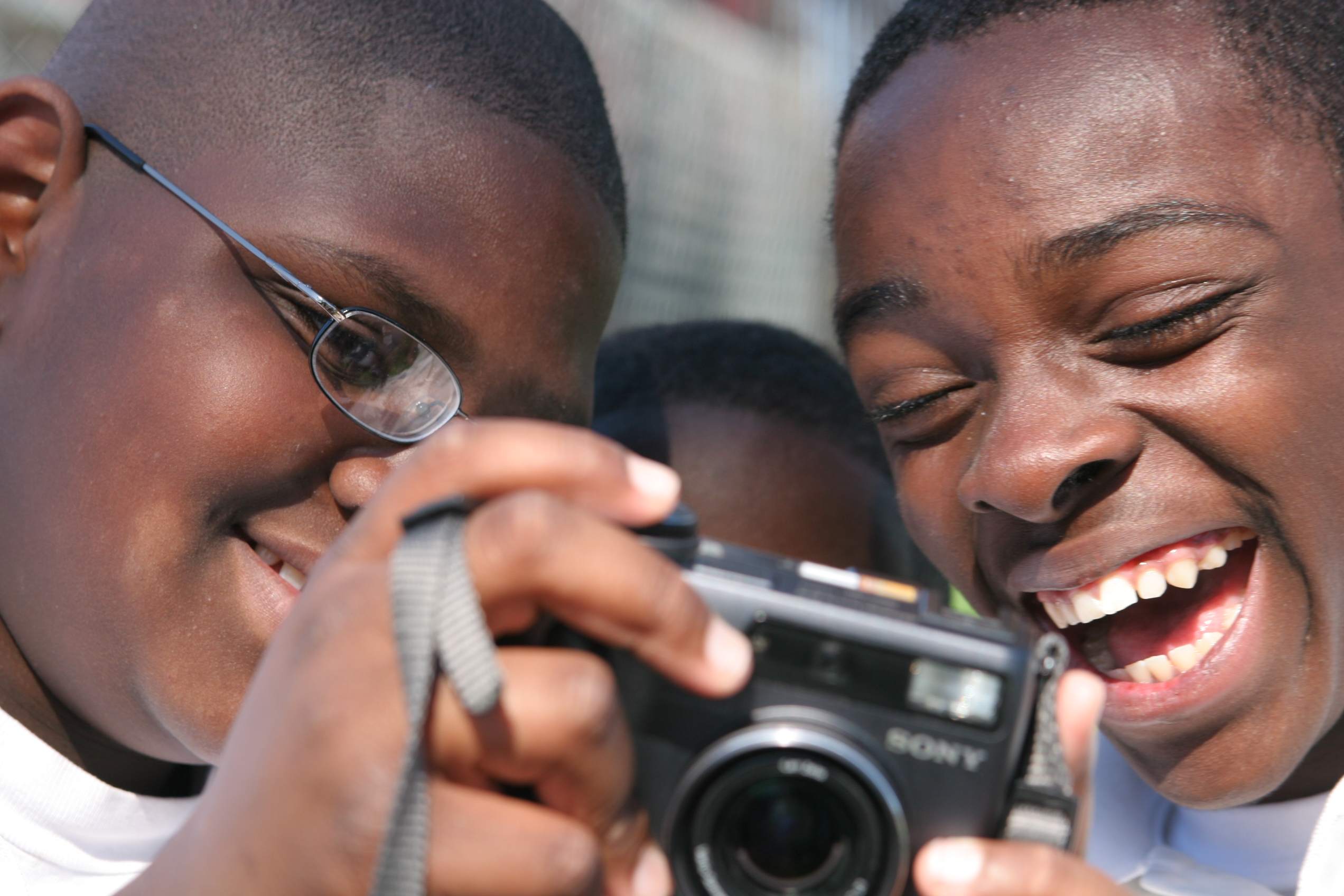
Budding photographers
I would say the first thing as an initiator, dealing with kids, is to make sure you’re reaching for the sky. Make sure that you’re bringing the very best to young folks. I say that because sometimes when we talk about equipment, for instance, some people say “let’s just get this (lesser value) equipment because they’re kids and they don’t need a big camera”. In reality, that is what they need. For them to grab onto something real at a certain level, you’re able to push your message and your lesson a little bit further.
Also, believe in your vision. Know how or learn how to manage it.
How does research and evaluation factor into your program development and implementation?
In a big way. Evaluation and research impacts and informs how we move forward. It informs how we deliver programs and how we assess our accomplishments. We are able to see what the impacts of our programs are on the community, students, parents, and the adults that supports kids’ learning. We wouldn’t be the same organization that we are now if it wasn’t for the evaluation and research that is a part of Preservation LINK.
What do you most hope students who participate in your programs will walk away with from their experiences?
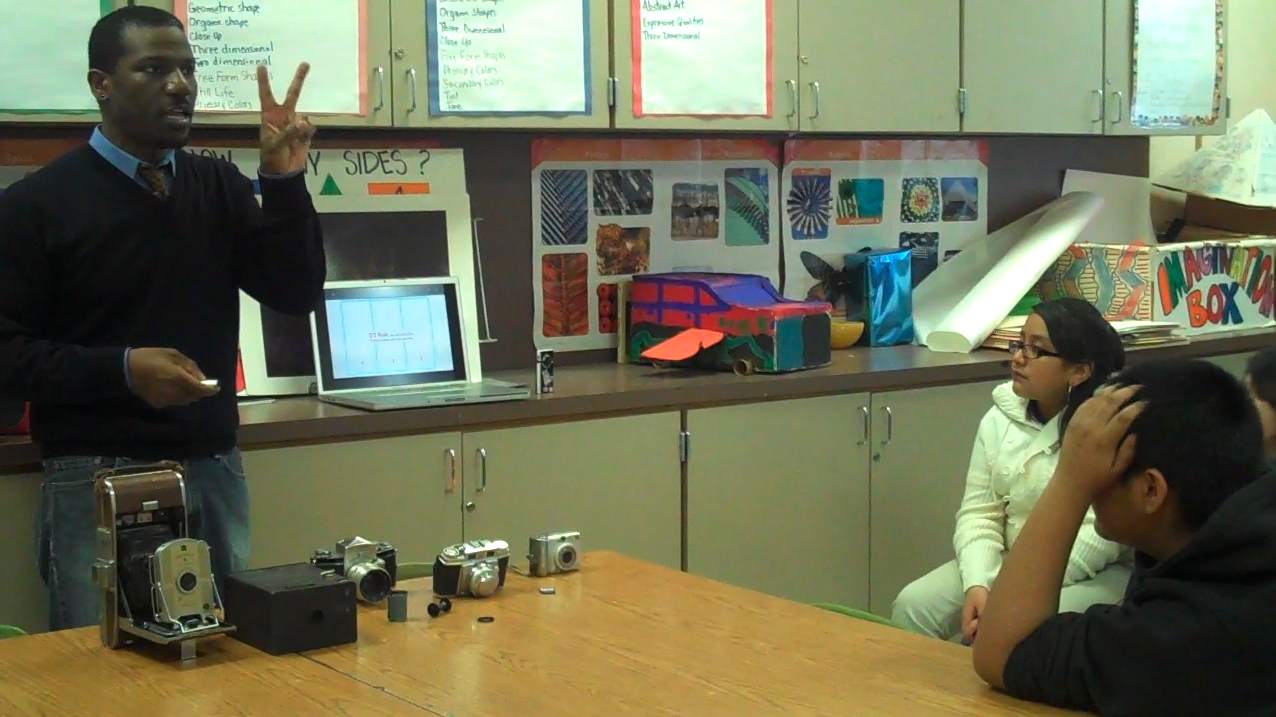
Students learn about the history of photography during a Preservation LINK program.
I want the students to know that people care about who they are, what they learn, and what they want to become. I hope they’re motivated to take even more ownership in their lives.
See photographs taken by elementary students during Presevation LINK’s Point of View Program at the Dallas Museum of Art. The exhibition, titled Through the Eyes of Our Children: Something Beautiful, will be on view from May 14-August 29 on the M2 level of the Museum, adjacent to the Mayer Library. View images from past Preservation LINK programs here.
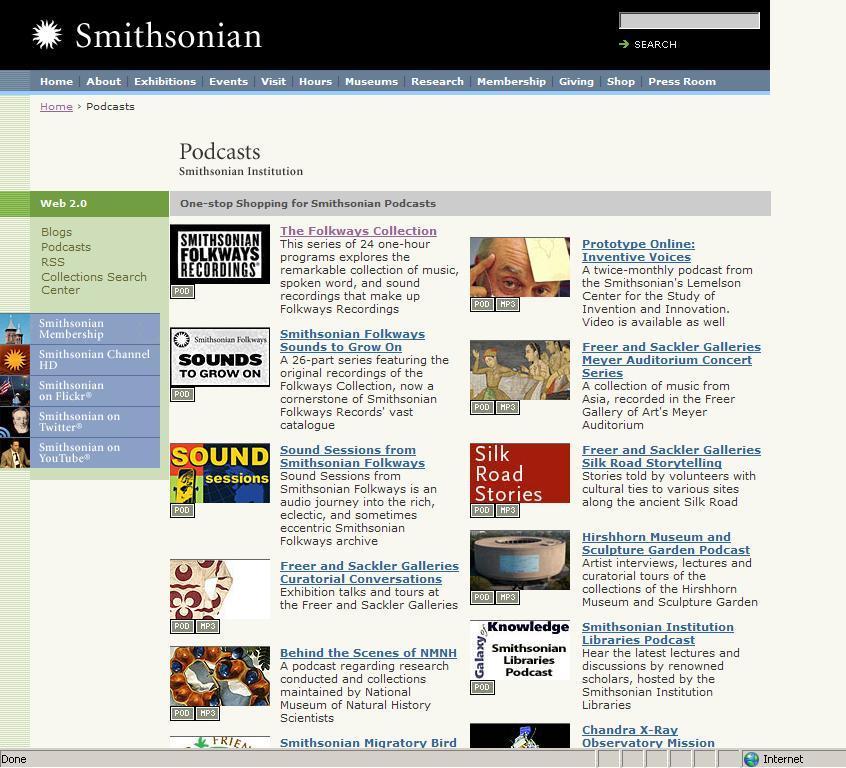 If you are interested in a more in-depth conversation about works of art, performances, or lectures, go to the Smithsonian Institution’s Podcast website. There is a wide array of disciplines and topics represented in the podcasts. If you have a moment or two, I encourage you to think about ways you can use these types of digital resources in your classroom related to the curriculum you teach.
If you are interested in a more in-depth conversation about works of art, performances, or lectures, go to the Smithsonian Institution’s Podcast website. There is a wide array of disciplines and topics represented in the podcasts. If you have a moment or two, I encourage you to think about ways you can use these types of digital resources in your classroom related to the curriculum you teach. 